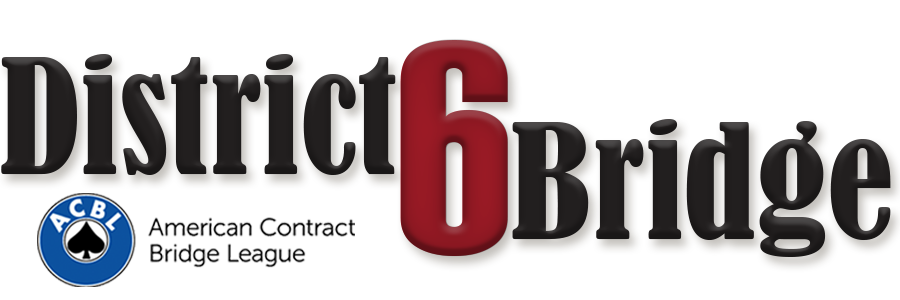You open a 15-17 1NT and responder invites in diamonds. KQJxxx, AQxxxx, or AJ10xxx and out is what I would expect responder to have. With better holdings AQJxxx or AKJxxx just bid 3NT. Some use a direct jump to 3 as invitational. Over 3D, opener passes to reject the invitation. Others use 2NT as a transfer to diamonds. Over 2NT since one can bid either 3C or 3D, they can have different meanings. Some players accept the invitation by bidding 3C and reject the invitation by bidding 3D, while others use 3D as the acceptance and 3C as the rejection. In this problem, you’ve opened 1NT and your diamond holding is K32, a very good diamond holding to have. Are there some hands with K32 of diamonds that are too weak outside to accept the invitation?
There are many points brought forward by the experts.
Ron Sukoneck:—Though clearly the minor suit invitation may be something other than an invitation to 3NT, it may be a slam try, I believe it is appropriate to always assume that the invitational diamond bid is looking for 3NT. Therefore, you should accept with aces and kings and not with a worthless doubleton. On close hands you should accept if you have the other three suits stopped. Assume the “bottom” of the invitational diamond bid is AQxxxx with nothing outside. Any hand you would want to be in 3NT opposite a weak 2D bid is worth accepting.
Point #1 – assume responder’s bid is inviting 3NT.
Point #2 – reject with an outside worthless doubleton.
Bob Hamman:— I would be looking for a good probability of nine fast ones and no unstopped suit or a good shot at 5D. So S:KQ10xAxxKxxKQx is a plausible pass, whereas S:AKxxxxxKxxAxx is an easy 3NT. S:AQxxxxxKxxAxx is plausible and is not even a 1NT-opener. S:AKJxJxKxxKQJx is a pass even with 18 HCPs.
Point #3 – accept if you can count nine fast tricks.
Henry Bethe: I would reject withS:QJxKQKxxAxxxxx. Basically any hand that does not contain 2 1/2 quick tricks outside diamonds and also any hand that has a suit of Jx or worse, e.g. S:JxAKxxKxxAJxx.
Jon Wittes: If partner invites with two of the top three honors, I would not expect him to have anything outside the suit, and would probably not accept with a small doubleton in any suit, and would be hesitant to accept with three small in a suit, especially if I didn’t have three quick tricks outside.
Barry Rigal: Aceless hands and minimums would not accept. S:QJ5KQ104K32KQ4 should reject — and note than in high-card terms this is not a minimum (using work-count). After all, partner with S:xxAxxQJ10xxxxx has done well not to blast 3NT and might be disappointed to discover that on a spade lead even 2NT is not laydown! S:AKQ4Q5K32J654 is another example; the danger of them running hearts or your not having nine tricks in 3NT on a round-suit lead is too high. Give partner an attractive S:xxKxJ10xxxxKxx (where he thought with a diamond accept, 3NT would have play) and again on a heart lead you have five tricks — and no more top winners. Give partner the HJ, or the DQ instead of the J, or the CQ instead of a DJ/10, and 3NT is still poor. Or give him S:xxKJxQxxxxxQx — and on a club lead 3NT is still virtually hopeless.
Point #4 – reject if your hand is aceless.
Bart Bramley: The number of aces is the most important feature. We will probably have to run our tricks immediately to make 3NT. Lack of aces makes that difficult. Here are a few hands with which I would reject: S:QxxKQxK32KQxx, or S:QJxxKQxK32KQx, or S:QJxxKQxK32Axx. The last of these has an ace, but its soft values decrease the chance of nine quick runners. Another negative feature is a totally unstopped suit, especially a doubleton. I would reject with these hands:
S:KQxxxxxK32AKx, S:AKQxxxxK32KQx or S:QJxxxxK32AKQx. With TWO side aces I would accept even with the last suit unstopped. Maybe they won’t lead that suit or it will divide 4-4, but with two side aces I should have my nine tricks if they don’t take the first five. Without two sides aces I may have no play even without the killing lead By the way, I don’t consider this area of bidding very important, especially at IMPs. In my own NT structure I don’t have a minor suit invitation! If I hold such a hand I usually just blast 3NT and hope for the best. I have not noticed any loss of efficiency. I think that my methods represent the trend away from game-invitational sequences in general.
Matt Granovetter: S:xxKQxxK32AKQx,S:AKJxxxK32KQxx. In short, any hand where it looks like the opponents can take the first five tricks easily. Assume partner has D:AQJxxx and out or D:QJTxxx and an ace, in either case without a four-card major. Then match the hands up. I once had S:AQxxxxAxxxAxx with the late Victor Mitchell in the Rosenblum KO. I opened a 15-17 notrump despite holding only 14. He bid 3D to play (we had no invite available). I bid 3NT. He held S:xxxxxKxxxxxxx. Spade finesse worked, plus 600. This is a true story, against Garozzo on my left, who was very unhappy about it. The point is that it’s not only the diamond fit that counts or your HCPs, as much as picturing the likelihood of nine top tricks.
Point #5 – Reject if it looks like the opponents can easily take five tricks before you take nine.
Point #6 – Accept if you can make 3NT opposite Kxxxxx and out, S:AxxAxAxxxAxxx for instance.
Bobby Wolff: S:KQJxxK32KQJxx, S:QxKJ10xxK32KQJ, S:AK10KQxxK32xxx, S:QJ10xxxK32AKQx, S:KQJ10QJK32KQxx. Summary, 0 or 1 ace, open suit, lower end of the range, expectation of making 3D: e.g. S:QJxKQ10K32Axxx, I’d chance 3NT since 3D could easily go down.
Point #7 – Accept if 3NT is going to have the same play as 3D. There’s a bigger bonus for going plus in 3NT. This would be very hard to figure out.
Point #8 – It’s not how many HCPs you have, it’s how those points are divided. Reject with S:JxKQJxKQxKQJx, accept with S:xxxxAKxKxxAxx.
Rose Meltzer: Probably most 15 counts with a small doubleton in one of the majors.
Joe Kivel: I assume partner has AQJxxx and out, and bid 3NT if it looks like it has a good chance of making.
Karen Allison: S:432QJxxKxxAKQx or similar – anytime one suit is overstuffed and two are weak, I’d take a pass.
Kit Woolsey: Mostly kings queens and jacks on the side, with maybe a weak suit in the bargain, e.g. S:xxKQJxK32KQJx. That is about as clear as it gets — it would be virtually impossible for partner to hold a hand which has any decent play at all for 3NT.
Bobby Levin: S:xxxQJxKxxAKQx–basically any hand where I thought it very unlikely not to be able to win the first trick and take nine tricks.
Steve Bloom: I need a fit, and aces and stoppers to bid game. Picture partner with, say, AQxxxx. A hand like S:AxxxQxKxxAQxx is border-line, as game rates to be poor on a heart lead, and so-so on a club lead. I would pass nonvulnerable. I wouldn’t even dream of bidding on with a hand like S:KQxxQxxKxxKQJ, where game rates to be awful, even if I get a heart lead and score my queen. A tougher problem comes with hands like S:AxxxxKxxAKJxx. 5D is best opposite pure diamonds and short hearts, but 3NT is best if partner has three hearts, or softer values.
Robin Klar: S:Q987 KJ9K32KQJ. Needs an ace for a fighting chance. :AJ3AJ3K32Q1064 I’d go here if one of my jacks were a queen or if I had a 10 with the jack. KJ9QJ8K32AJ87. My four-card suit is a pip away from having something to work with which means I’d need two heart honors onside or a club lead and a heart guess, too much. KJQ92K32AQJ87. I wouldn’t go on this hand because it looks like the only way I could make it is if they underled the ace of spades and the king of clubs is onside. I’d go if my jack of spades was the jack of hearts on the outside chance that partner had 10xx of hearts, then all I would need is a club finesse provided partner had two clubs.”
Pratap:”—Assuming AQ10xxx as minimum for invite. I would decline with hands where I have single stoppers and insufficient quick tricks to run nine tricks. E.G. QJxK10xK32KQJx.”
Joel Wooldridge:”—I would not accept if I could see a weakness in a side suit (like Jxx and another suit w/o the ace or Qx or worse in 1 side suit). I would also not accept with something like KQJxQJxKxxQJx.”
John Hurd:”—KQxKQKxxKxxxx. or KxxAxxKxxKQxx. Generally hands with those general parameters, where we have do not have nine apparent tricks opposite AQxxxx. Also xxKQJKxxAKxxx. Also depends heavily on scoring form. Much more likely to bid game playing IMPs than matchpoints”.
Eddie Wold:”—xxAKxxK32KQxx. This looks like we are off at least four spades and the club Ace. KQKQxxK32QJxx. This looks like we will not be able to generate nine tricks before they get five or more. QJxQJxK32KQJx. Same previous example. JxxJxK32AKQJx. Here they will likely be able to take their tricks before we take ours. Obviously the theme here is all suits stopped and Aces.”
The following experts give hands where 3NT figures to be a bad contract.
Dave Berkowitz:”—Maybe JxxKQK32KQJxx, or better QxxKQK32KQJxx.”
Chip Martel:”—Would pass 3 with JxAKQxKxxQxxx or AxQJxxKxxKQxx.”
Kerry Sanborn:”—Would pass 3 with xxAKQKxxQJxxx, KxxKxxKxxKQJx, AKQJQxxKxxxxx or xxxKJxKxxAKJx.”
Larry Cohen:”— AKQ2Q2K32J432, J2AKQK32Q8765 and many more”
Marty Bergen:”—Would pass with AJxxQxKxxKQJx.”
George Jacobs:”—Would pass with KQJxQxK32Axxx.”
Mildred Breed:”—KT97KQTK32KJ96, QJTKQJ3K32QJT4, AQQJT4K32QJ98.”
Nick Nickell:”—QxJxxK32AKQJx, xxxQxxK32AKQJ, KxxKxxK32KQJx, KQKxxK32KQxxx, AxxQxxK32KQJx.”
Eddie Kantor:”— I think I would hit the table with AKQx xxKxxQJxx or one more low heart and one less black card.”
Grant Baze:”—Any hand with Qx or worse in a suit and not nine runners after a favorable lead; e.g. KQxxKQxxKxxQx or any hand with two unstopped suits; e.g. QxQxxKxxAKQJx.”
Two experts show a fit no matter what the rest of the hand looks like. Do you have a fit or don’t you is the only question.
David Bird:”—If you play transfers, then you accept by breaking the transfer (or by not breaking it, as is your agreement). It is then up to partner whether he bids 3NT. I think I would always break with K32 in that case, just in case he had some strong hand and wanted to head for a slam. Otherwise, I guess it would be a hand that was ace-less outside with not too many kings.”
Zeke Jabbour:”—Using our methods, transfers, asking solely whether we like the SUIT or not it would not be appropriate to deny the fit. Partner has asked a specific question and may even be interested in slam if we fit. We do incorporate a safety mechanism after minor suit transfers, showing shortness. This serves the dual function of finding the right strain, warning against NT without stoppers and enhancing evaluation for minor suit slam bidding. If there were a way to refuse to acknowledge a fit, I suppose the hand would have to be a minimum with a worthless doubleton. But, by and large, we answer the question and blame partner if he makes the wrong decision.”
There are some hands where it’s clear to accept or clear to reject responder’s invitation.
A two-little suit and lack of aces are symptoms of rejection. Holding aces and having length in an unstopped suit are points for acceptance. With hands that fall in the middle, accept aggressively. The bonus is much bigger for making 3NT then for making 3.

